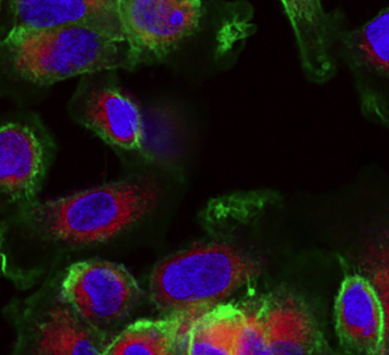BY DR. LOUIS ALPERT
Ombudsman
 Researchers from MIT’s Koch Institute will work with teams from the UK and Europe to use nanoparticles-developed by MIT(often called “Russian Dolls”) to help carry a combination of drugs into the brain to attack the most aggressive and deadly of all brain tumors, known as glioblastomas.
Researchers from MIT’s Koch Institute will work with teams from the UK and Europe to use nanoparticles-developed by MIT(often called “Russian Dolls”) to help carry a combination of drugs into the brain to attack the most aggressive and deadly of all brain tumors, known as glioblastomas.
The MIT team, based at the Koch Institute for Integrative Cancer Research, includes Dr. Paula Hammond (featured in our March 20, 2019 column as the scientist who heads MIT’s Department of Chemical Engineering) as well as Dr. Michael Yaffe, director of the MIT Center for Precision Cancer Medicine and Dr. Forest White, professor of Biological Engineering at MIT.
According to the MIT News: “Brain Tumors represent one of the hardest types of cancers to treat. There are just a few drugs approved to treat glioblastoma, but none of them are curative. Just last year,around 24,000 people in the United States were diagnosed with brain tumors, with around 17,500 deaths from brain tumors in the same year. Patients diagnosed with this disease have a median life expectancy of less than 15 months.
“Treating glioblastoma is challenging in part because, like many other cancers, it can quickly develop resistance to cancer drugs. Some drug combinations deliver a powerful one-two punch that can overcome cancer cells’ ability to adapt to treatment The International team aims to find such potential drug combinations…using systems pharmacology developed at MIT for predicting the development and reversal of drug resistance in glioblastomas.
“The team will then test the effectiveness of newly-identified drug combinations in cell and mouse models, including two promising combinations already identified by researchers at the Koch Institute and the University of Edinburgh…But glioblastoma presents an additional obstacle to treatment: Even if the researchers find potential new treatments, the drugs must cross the blood-brain barrier, a structure that keeps a tight check on anything trying to get into the brain, drugs included.”
“Glioblastoma is particularly challenging because we want to get highly effective but toxic drug combinations safely across the blood-brain barrier, but also want our nanoparticles to avoid healthy brain cells and only target the cancer cells,” Hammond says. “We are very excited about this alliance between the MIT Koch Institute and our colleagues at Edinburgh and Oxford to address these critical challenges.”
Utilizing nanoparticles developed by Hammond at MIT, the team will experiment with new drug treatments to hopefully surpass that barrier. Early research has shown that nanoparticles loaded with two different drugs were able to shrink glioblastomas in mice. The MIT group and collaborators in the UK are one of three international teams to be working on this new frontier in cancer science.
The Ombudsman Alert is especially pleased to present the results of this “cutting edge” research to our readers and shares the hope that a final cure for these brain tumors is imminent.
Please address all comments and questions to: [email protected]

You must be logged in to post a comment Login